Digital Workplace
Defining and seizing the hybrid work with a mobile intranet experience
- By Poonam Chug
- No Comments
- Home
- Blog
- Digital Workplace
- Defining and seizing the hybrid work with a mobile intranet experience
02 Aug

Defining and seizing the hybrid work with a mobile intranet experience
Over the past year, most employees moved to remote working to comply with national lockdowns and curb the spread of the COVID-19 virus. Indeed, the pandemic changed the face of global business.
However, as the situation is coming under control and countries are slowly starting to open up, does it mean the entire global workforce will make its return to the workplace?
Well, we would say the answer is no. Even analysts worldwide predict the same. According to a survey done by Gartner, “82% of company leaders plan to allow employees to work remotely some of the time.” While the traditional office does provide some benefits that remote working fails to replicate, one cannot deny the ease remote working offers to employees.
Enter – the future of work. The hybrid working model – a mix of remote work and traditional office-based work.
In a hybrid setup, staff have the freedom to work from home, a cafe, or even a co-working space and come to the office only when face-to-face interaction is necessary. However, when employees work from disparate locations, they struggle with communication, collaboration, and information search, primarily if leaders don’t invest in the right technology. Such challenges are particularly tough for the frontline workers – retail workers, warehouse employees, nurses, etc.- in short, those who already have desk-less jobs and feel isolated from the rest of the organization.
That is where mobile-first intranets come into the picture. As the name suggests, a mobile intranet app brings the company’s entire digital hub to the employees’ fingertips, increases efficiency, and boosts workforce engagement.
So, what is the current scenario of work? How can a mobile intranet app define and seize the hybrid work experience? Let’s find out.
A Glance at the Current Scenario
Facebook has more than 48,000 employees working in 70 offices worldwide. In an interview, CEO Mark Zuckerberg claimed, “We’re going to be the most forward-leaning company on remote work at our scale. I think it’s possible that over the next five to ten years – maybe closer to ten than five, but somewhere in that range – I think we could get to about half of the company working remotely permanently.”
On the other end of the spectrum is JPMorgan Chase. In an interview with CNBC, the company’s Chairman and CEO, Jamie Dimon, said that he has already asked his U.S. employees to begin getting used to returning this month with the goal of having 50% workers rotating through offices by July. The report claims, “while he’s fine with the greater flexibility allowed by employees working from home part-time, he said that there’s no substitute for being at the office.”
Like Facebook and JPMorgan Chase, most organizations worldwide will be operating in a hybrid setup, at least for some time in the future.
Defining and seizing hybrid work with mobile intranet experience
A mobile-first intranet lies at the heart of a hybrid workplace. It acts as a centralized hub of all the information, tools, and apps employees need for day-to-day work.
A mobile intranet app empowers employees to stay connected no matter where they are. Users can access documents, everyday apps, analytics, reports, videos, and policies – anytime and on the go.
Let’s delve deeper.
1. Stay connected, regardless of location.
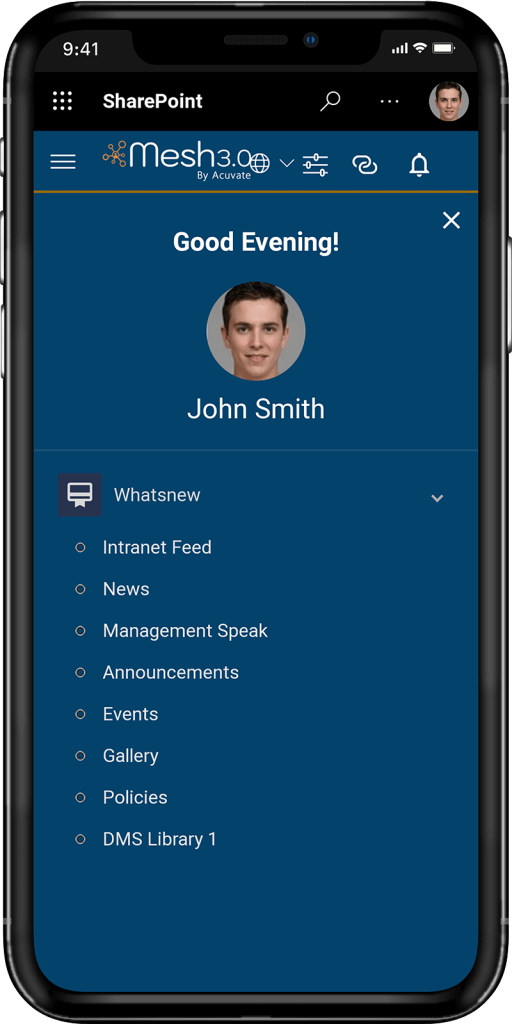
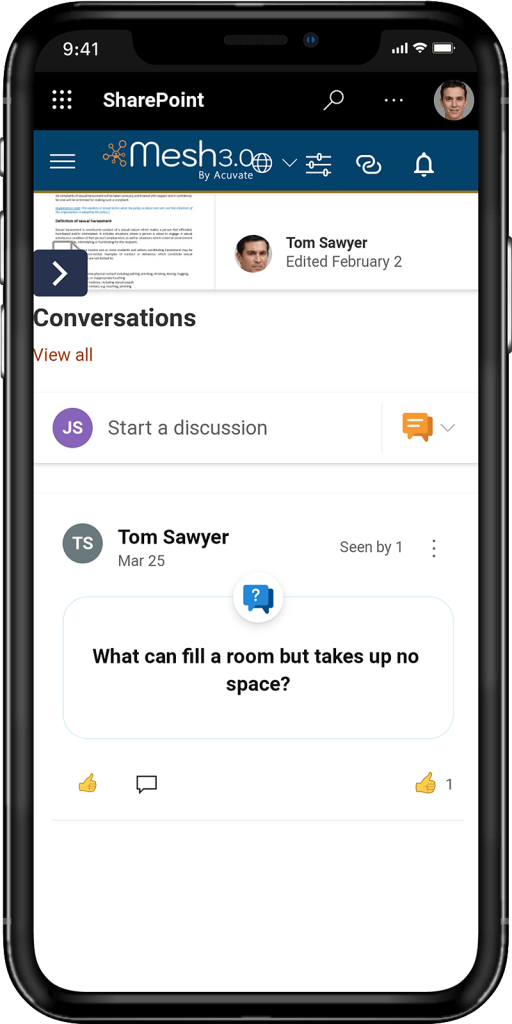
In a hybrid workplace, there will be some employees working from the office, while others will operate remotely or from the frontlines. With most of the staff working from different locations, organizations need to establish communication channels for a largely invisible workforce.
Social capabilities like blogs, discussion forums, and messaging apps available on the mobile intranet app enable employees to stay updated on the latest news, access policy documents, share success stories, maintain social links, participate in discussions, and comment on posts – anytime and anywhere.
For the frontline workers, such tools provide an opportunity to receive top management communication, provide feedback, and connect with colleagues in the corporate office.
2. Experience AI-powered personalization on your smartphone.

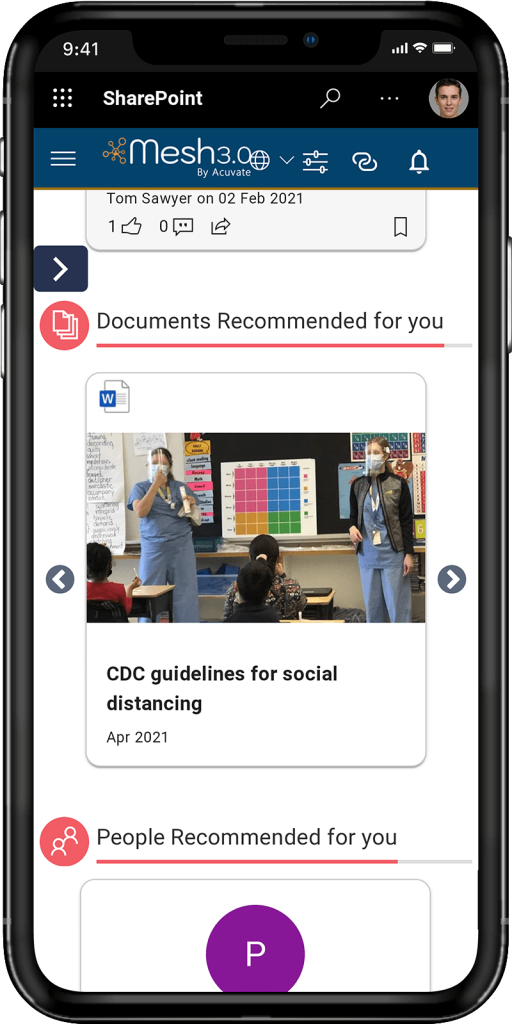
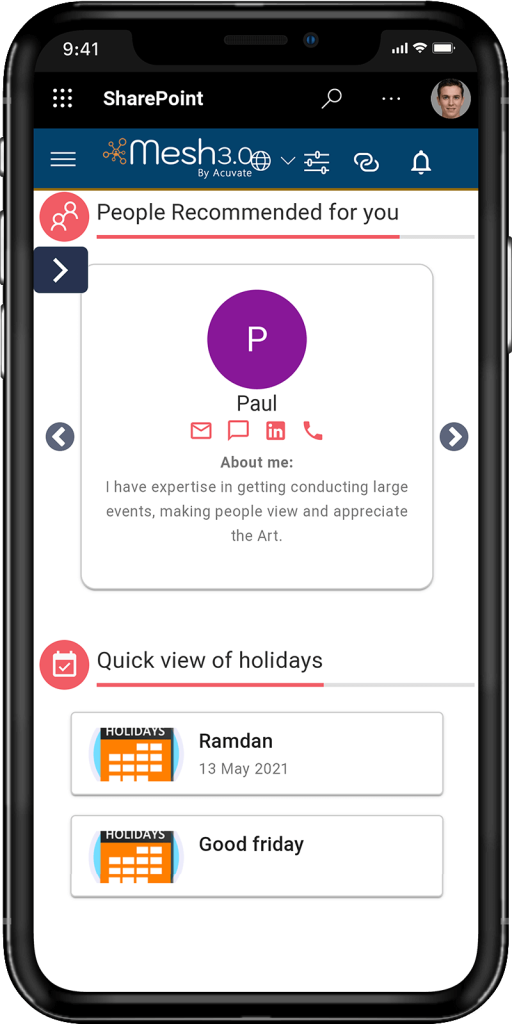
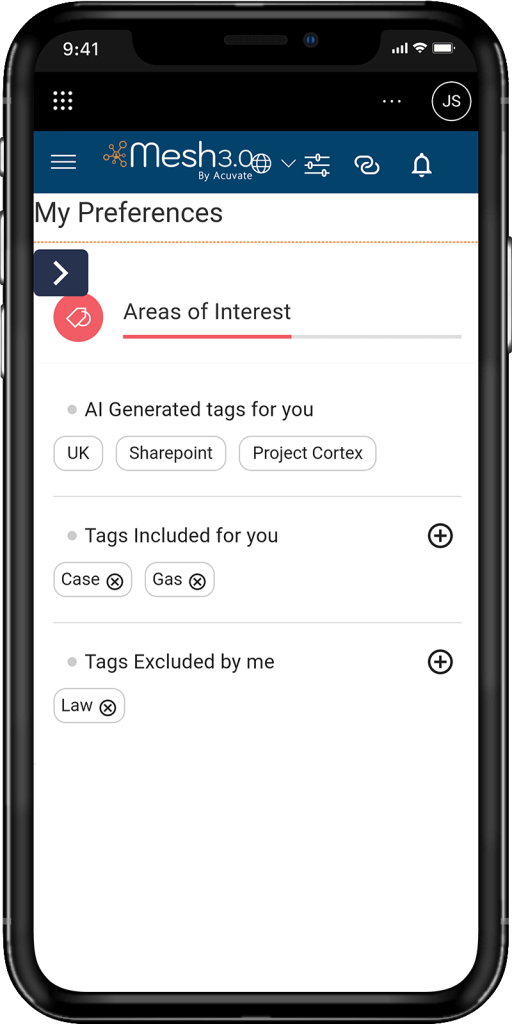
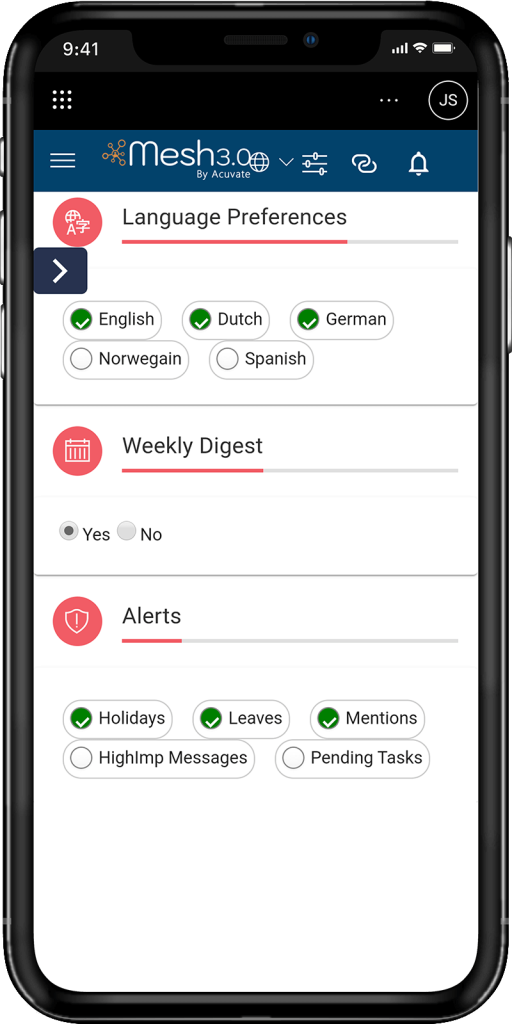
Whether they are traveling, working remotely, on-site, or in the office, employees receive personalized alerts about holidays, leaves, events, crises, etc., directly on their phones. AI-enabled content recommendations ensure the social feed stays relevant to the employees’ role, geography, and interests. When in need of assistance, the system helps employees locate and connect with the right subject matter experts.
Moreover, employees can tailor their content experience – read and access content in their preferred language, choose their preferred content topics, and personalize their alerts.
3. Retrieve content and collaborate with project teams working in different geographies.

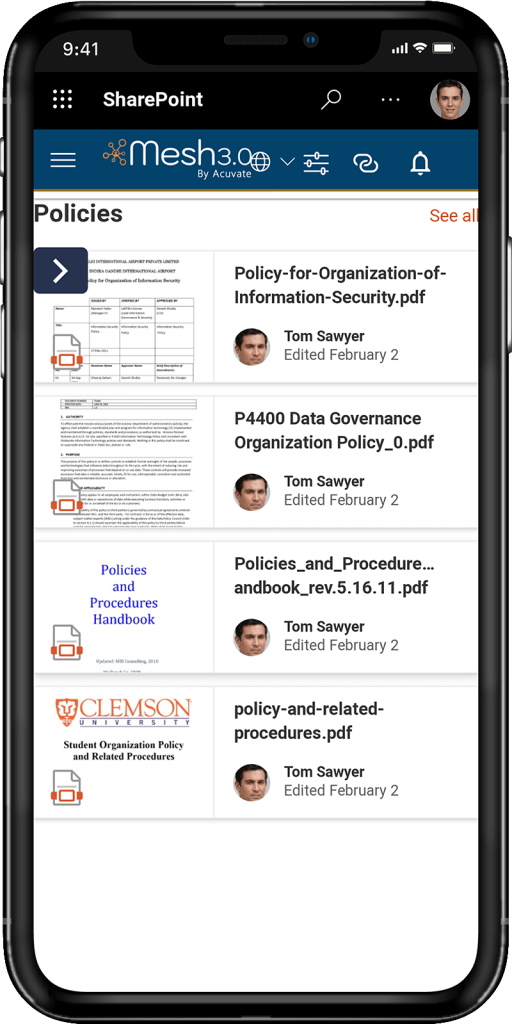
Team collaboration is difficult to achieve in a physical setup. Add to it the complexity of a hybrid work model; confusion and conflict are bound to arise.
With an in-built project management system, a mobile intranet app allows project members to assign tasks and check on the progress. Team members get visibility into who’s working on what. They can ask questions from the right individuals and flag work as “complete” when done.
Yes, accessing the right information is crucial. But, accessing it at the right time is vital to enhancing the productivity of employees, especially the frontline workers. A cognitive search engine helps locate the required files, documents, and training resources across the organization’s network. Advanced meta-tagging and AI-driven personalization draw up the most relevant search results. Moreover, users can leverage the mobile intranet chatbot to retrieve the needed data on the go.
4. Carry out routine tasks with quick links to self-service tools.

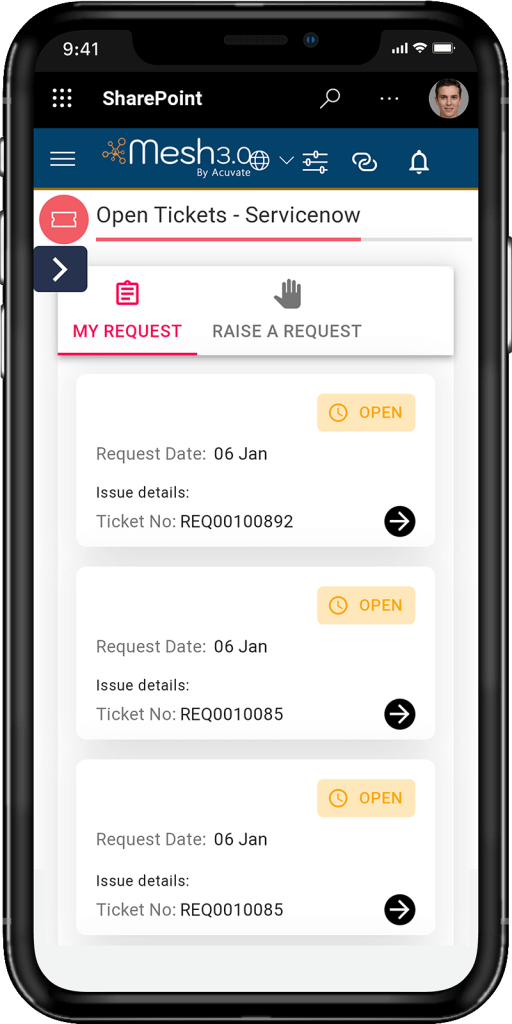

Whether it’s raising IT helpdesk requests, applying for leaves, filling up time and expense sheets, managing travel plans, or accessing HR policies, quick links to self-service tools allow employees to carry out routine tasks from anywhere.
Such tools reduce the dependence on HR, IT, and the employee helpdesk for mundane day-to-day requests.
5. Bridge the gap in workplace innovation with an idea management tool.
Innovation is a complex process – easy to handle in a physical office space but challenging to execute when the entire workforce is spread across different locations.
Why? Because innovation demands collective thinking. It requires managers to mediate conflicting ideas. With the right idea management software, organizations can fuel innovation and encourage employees to develop the best solutions to business problems.
A mobile intranet app helps employees pitch in their ideas and distill the brightest ones with likes, comments, and upvotes – anytime and anywhere. Gamification-based idea management acknowledges the best ideas with rewards and top-rated badges displayed on the app’s social feed.
How can Acuvate help?
While remote working offers a great degree of safety, autonomy, and flexibility, the traditional office isn’t dead. Hence, hybrid workplaces will be the future of work in a post COVID world. A mobile intranet app enables seamless collaboration and enhances workforce engagement in a hybrid working model with several features, including –
- Social capabilities to allow the workforce to stay connected, anytime and anywhere
- AI-enabled personalized content recommendations so that employees are always in the know of what’s relevant to them
- In-built content management systems and project workspaces for smooth working
- Idea management tools that enable the hybrid workforces to innovate
- Self-service tools and intranet chatbots that help retrieve information and execute routine tasks
At Acuvate, we help clients deploy a platform-independent, mobile-first intranet app with our autonomous SharePoint intranet solution called Mesh 3.0.
Built on the Office 365 foundation, our solution leverages powerful Microsoft technologies, including LUIS, Office Graph, Azure Search Services, and MS Natural Language Stack.
Mesh offers flexible integrations with everyday applications, such as Salesforce, ServiceNow, Workday, Office 365, SAP, LoB, and many more.
Our user-friendly mobile intranet app has advanced capabilities as follows –
- Cognitive enterprise search
- Content personalizers and recommendations powered by AI
- Intelligent idea management
- Content management system
- Knowledge mining with Azure
- Intranet chatbot
We also build custom mobile-first solutions to empower frontline workers to access critical information and digital tools on the go.
Please watch this video to learn more about our mobile intranet solution for the hybrid workspace, or feel free to schedule a personalized consultation with our experts.
Poonam Chug is AVP - SaaS Strategy & Business. She has worked in various areas, right from designing and executing sales & account management strategies to reengineering digital workplace solutions. With her determined focus on our mission and progressive approach, she has achieved customer delight in the space of AI, Knowledge Mining, Content & Collaboration, Virtual Assistants, RPA and more. Backed with a deep understanding of customer needs and technology, she leads the SaaS business unit with an upshot of maximizing revenue while ensuring customer satisfaction.





Poonam Chug